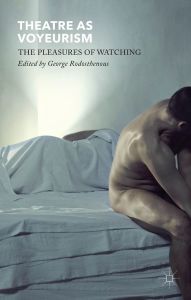Dance in US Popular Culture
Chapter 9 (Case Study 1): Is He… You Know…
Opening Section
The text on the TikTok video reads “What happens when you put gen Z in the same room together.” What happens is this: in a crowded dance club populated mostly by women, a large video screen shows a music video, and just at the moment in the song when a small bell chimes, the partygoers in the club extend an arm above their heads and bend it at the wrist, timing the move perfectly with the chime. The crowd goes wild, delighted at the move, and the video ends. It’s a small piece of choreography—a simple bend of the wrist—but a closer look at this tiny gesture reveals unexpected reworkings of old stereotypes and surprising twenty-first-century identity formations.
One of the big pop hits of Summer 2021 was “Kiss Me More” by Doja Cat featuring SZA, a track on which both artists rap over a bouncy, disco-inflected pop melody. Released in April 2021 as the lead single to Doja Cat’s third album, Planet Her, “Kiss Me More” hit #1 on the Billboard Top 40 and spawned at least two popular trends on the social medium TikTok. Neither trend can be obviously linked to the song’s lyrics, but both feature the same section of “Kiss Me More,” the second verse, in which SZA raps “Caught dippin’ with your friend / You ain’t even have man, lyin’ on ya— / You know that.” The word SZA doesn’t say after “lyin’ on ya—” is replaced in the song by a small ding. A little bell chimes—as if a twinkle of light momentarily glinted from her smile. In the music video, SZA looks at us and winks. Ding.
TikTokers first began using “Kiss Me More” to claim ownership over their significant others. Beginning as early as May 2021, users made videos with text that read something like “The A in his name stands for…” as the SZA section of the song played. When the little chime arrived in the song, the text would switch to “All mine” or some equivalent phrase while the TikToker looked at the camera smugly. There are numerous iterations of this meme, using different letters and rephrasing the possessive statement, but the meme’s narrative always asks us to anticipate a reveal. We wait for the TikToker to tell us what we don’t know, and the viewer is rewarded—like Pavlov’s dog—each time the bell chimes.
A dance meme using this exact segment of the song became popular at the same time. In the earliest versions, an ostensibly heterosexual young man articulates a problem with which he has been confronted. The TikTok text reads, “Nan- ‘why havent u got your self a girlfriend yet?’,” or “pov: a girl starts to flirt with you,” or “When your parents think you have a ‘roommate’ moving in.” The young men don’t speak in the videos, but as the bell chimes, they flash a limp wrist, apparently revealing their gay sexualities. This small dance move became very popular on TikTok, primarily among gay and bisexual men (of various races and nationalities), but it was eventually adopted by lesbian, trans, and other TikTokers sharing coming-out narratives. In each iteration of the meme, an apparently heterosexual TikToker mobilizes the dance move to reveal one of several queer sexualities. TikTokers across lines of sexuality, race, and gender began using this small gesture—synced with this tiny chime—to subvert assumptions of heterosexuality. As we watch, we wait for the reveal, and the ding tells us the (queer) information we’re anticipating.





